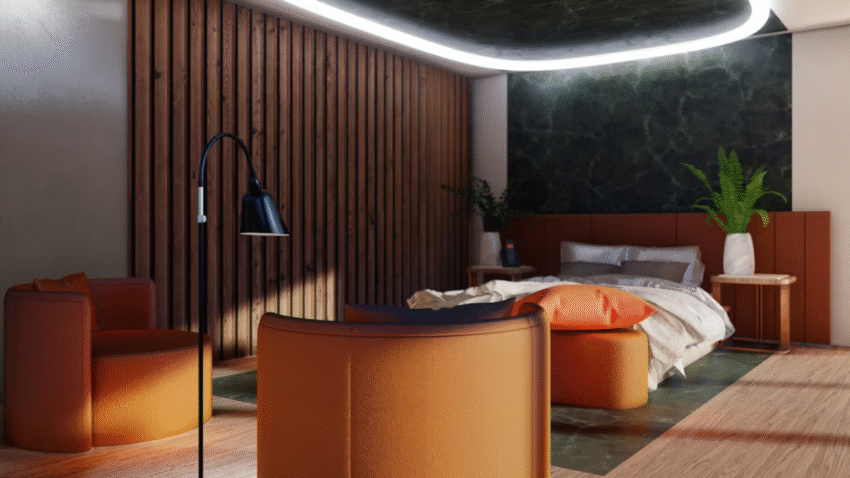Introduction
Sharing a bedroom can be a challenge—especially when you and your roommate, partner, or siblings have totally different tastes. If you’ve ever wondered how to decorate a shared bedroom with different styles, you’re not alone! The good news? With a bit of creativity and planning, you can combine your unique styles into one cohesive, comfortable space you’ll both love. This step-by-step guide will show you how to blend your looks while keeping the peace and your bedroom beautiful.
Why Blending Styles Matters in a Shared Bedroom
Your bedroom should be a restful retreat, but clashing décor can create visual chaos and even tension between roommates. Decorating a shared bedroom thoughtfully means respecting each person’s tastes while building a look that feels balanced and unified. When you get it right, you’ll both feel comfortable, heard, and at home—and the room will feel welcoming, stylish, and functional.
Step-by-Step Guide to Decorating a Shared Bedroom with Different Styles
1. Have an Honest Style Chat
Before you buy anything, sit down together.
- Talk about what each person loves and hates—colors, patterns, textures, must-haves.
- Look at inspiration images to spot overlap and common ground.
- Decide which elements are non-negotiable for each person. Communication is key!
2. Pick a Neutral Base
A neutral foundation helps tie two styles together.
- Choose a calming wall color like white, beige, or soft gray that works with multiple design tastes.
- Keep large furniture pieces (like beds or dressers) neutral so they won’t clash with different décor elements.
- A simple backdrop lets individual style pieces shine without overwhelming the room.
3. Create Individual Zones
If possible, give each person a dedicated area that reflects their personality.
- Use rugs, headboards, or wall art to define each side of the room.
- Hang different art above each bed or choose unique bedding for each person.
- For siblings, using matching beds but different colored blankets or pillows works wonders.
4. Use Cohesive Color or Pattern Accents
A shared color palette brings different styles together.
- Choose two or three accent colors you both like—these can appear in pillows, throws, or décor.
- If one person loves modern minimalism and the other prefers boho vibes, a shared color scheme can bridge the gap.
- Repeat patterns in subtle ways, like striped bedding that ties into a patterned rug.
5. Mix Textures for Balance
Combining different textures helps balance contrasting styles.
- Blend soft and structured pieces, like a plush throw on a sleek metal bedframe.
- Use natural elements (wood, rattan) to warm up modern or industrial looks.
- Layer rugs and bedding for extra coziness and a curated feel.
6. Personalize with Décor Accessories
This is where each person’s personality can really shine.
- Display personal photos, keepsakes, or favorite books on each side.
- Use nightstands to hold unique lamps or décor that reflects each person’s taste.
- For kids or teens, posters, pinboards, or fairy lights can help personalize the space.
7. Use Multi-Functional Furniture
Shared bedrooms can feel cramped, so maximize your space.
- Choose beds with built-in drawers or under-bed storage.
- Use shelves or storage cubes as room dividers to add privacy while keeping things tidy.
- A shared desk or table can work for different study or work styles with separate storage bins or organizers.
8. Compromise on Shared Elements
Some items will need to work for both people.
- Choose neutral or classic curtains, rugs, and larger décor pieces.
- Agree on a shared lighting plan that fits both styles—like mixing a modern ceiling fixture with boho bedside lamps.
- If you clash on one big piece, find a compromise style that blends both tastes.
9. Keep It Flexible
Tastes change, so make it easy to swap things out.
- Use removable wallpaper, decals, or posters instead of permanent paint if you rent or like to redecorate often.
- Keep bedding and accessories budget-friendly so you can update them seasonally or when your styles evolve.
- A flexible layout lets you move furniture around when you need a refresh.
Common Mistakes to Avoid
Mistake 1: Ignoring Each Other’s Input
Solution: Always check in with your roommate or sibling—don’t buy big décor pieces without mutual agreement.
Mistake 2: Choosing Clashing Colors
Solution: Stick to a shared color palette for accents so the room feels coordinated, not chaotic.
Mistake 3: Overcrowding the Room
Solution: Prioritize functional furniture and smart storage to keep the space open and organized.
Mistake 4: Decorating Everything the Same
Solution: Balance is key—matching everything can feel boring, so keep some individuality on each side.
Mistake 5: Forgetting to Personalize
Solution: Small décor items that show each person’s personality make a shared room feel welcoming, not generic.
Extra Tips & Bedroom Hacks
- Try Peel-and-Stick Décor: Use removable wallpaper or decals for easy personalization that won’t damage walls.
- Use Room Dividers Creatively: Curtains, screens, or bookshelves can separate the room without major renovations.
- Related Guide: Want to make your shared bedroom extra cozy? Check out our article on how to make a storage system for a shared bedroom to keep both styles neat and organized.
Conclusion
Learning how to decorate a shared bedroom with different styles is all about balance, compromise, and creativity. By finding common ground, choosing a neutral base, adding individual touches, and using color and texture to unify the space, you can create a bedroom that feels harmonious and uniquely you.
Remember: your shared space should reflect both of your personalities while staying functional and clutter-free. Bookmark this guide to keep your bedroom beautiful, peaceful, and perfectly balanced year-round!
